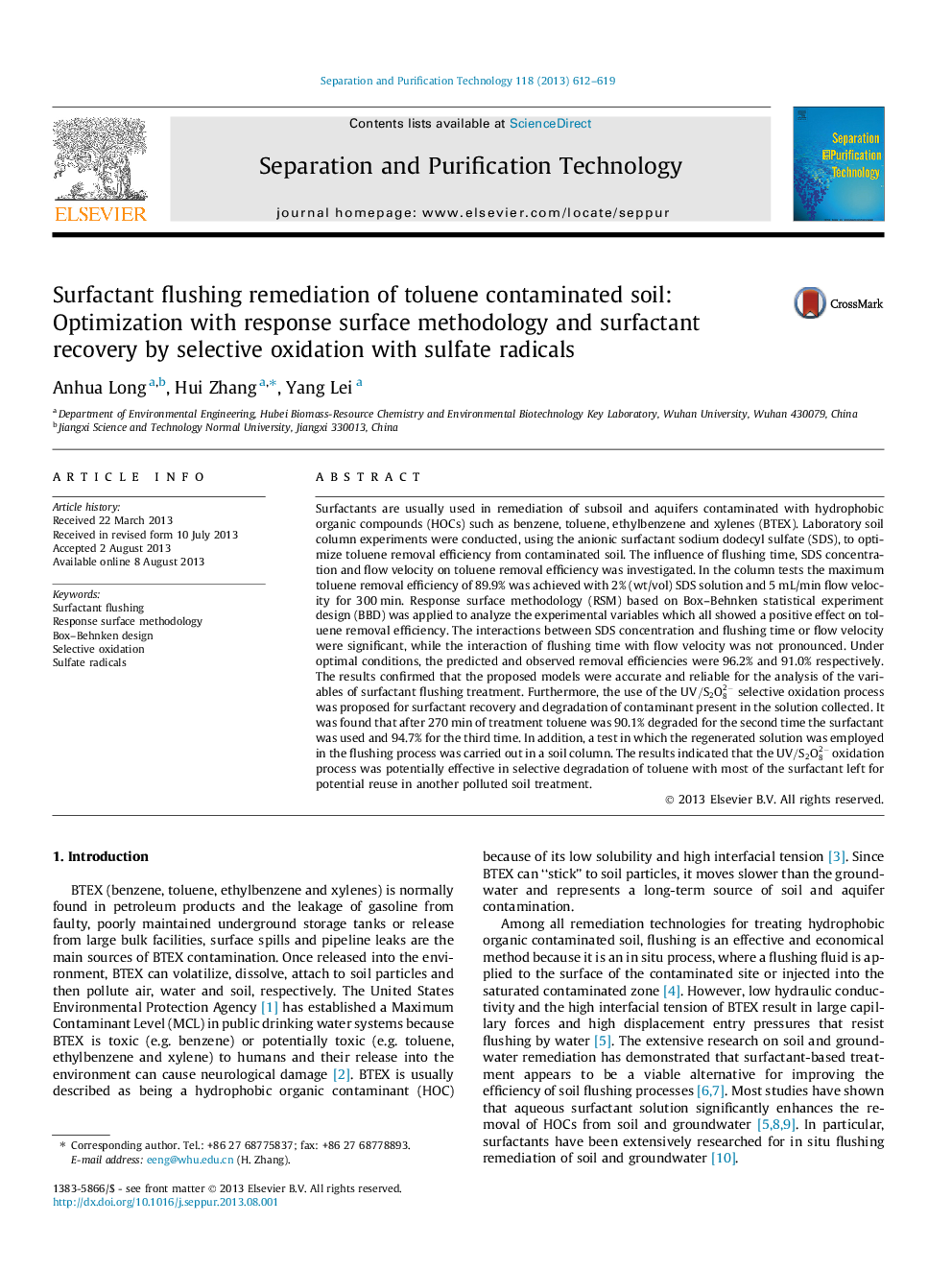| کد مقاله | کد نشریه | سال انتشار | مقاله انگلیسی | نسخه تمام متن |
|---|---|---|---|---|
| 641545 | 1457001 | 2013 | 8 صفحه PDF | دانلود رایگان |

• Surfactant flushing process was optimized by using response surface methodology.
• The spent surfactant was recovered by selective oxidation with sulfate radicals.
• The regenerated surfactant was effective for the flushing of toluene from soil.
Surfactants are usually used in remediation of subsoil and aquifers contaminated with hydrophobic organic compounds (HOCs) such as benzene, toluene, ethylbenzene and xylenes (BTEX). Laboratory soil column experiments were conducted, using the anionic surfactant sodium dodecyl sulfate (SDS), to optimize toluene removal efficiency from contaminated soil. The influence of flushing time, SDS concentration and flow velocity on toluene removal efficiency was investigated. In the column tests the maximum toluene removal efficiency of 89.9% was achieved with 2% (wt/vol) SDS solution and 5 mL/min flow velocity for 300 min. Response surface methodology (RSM) based on Box–Behnken statistical experiment design (BBD) was applied to analyze the experimental variables which all showed a positive effect on toluene removal efficiency. The interactions between SDS concentration and flushing time or flow velocity were significant, while the interaction of flushing time with flow velocity was not pronounced. Under optimal conditions, the predicted and observed removal efficiencies were 96.2% and 91.0% respectively. The results confirmed that the proposed models were accurate and reliable for the analysis of the variables of surfactant flushing treatment. Furthermore, the use of the UV/S2O82- selective oxidation process was proposed for surfactant recovery and degradation of contaminant present in the solution collected. It was found that after 270 min of treatment toluene was 90.1% degraded for the second time the surfactant was used and 94.7% for the third time. In addition, a test in which the regenerated solution was employed in the flushing process was carried out in a soil column. The results indicated that the UV/S2O82- oxidation process was potentially effective in selective degradation of toluene with most of the surfactant left for potential reuse in another polluted soil treatment.
Journal: Separation and Purification Technology - Volume 118, 30 October 2013, Pages 612–619